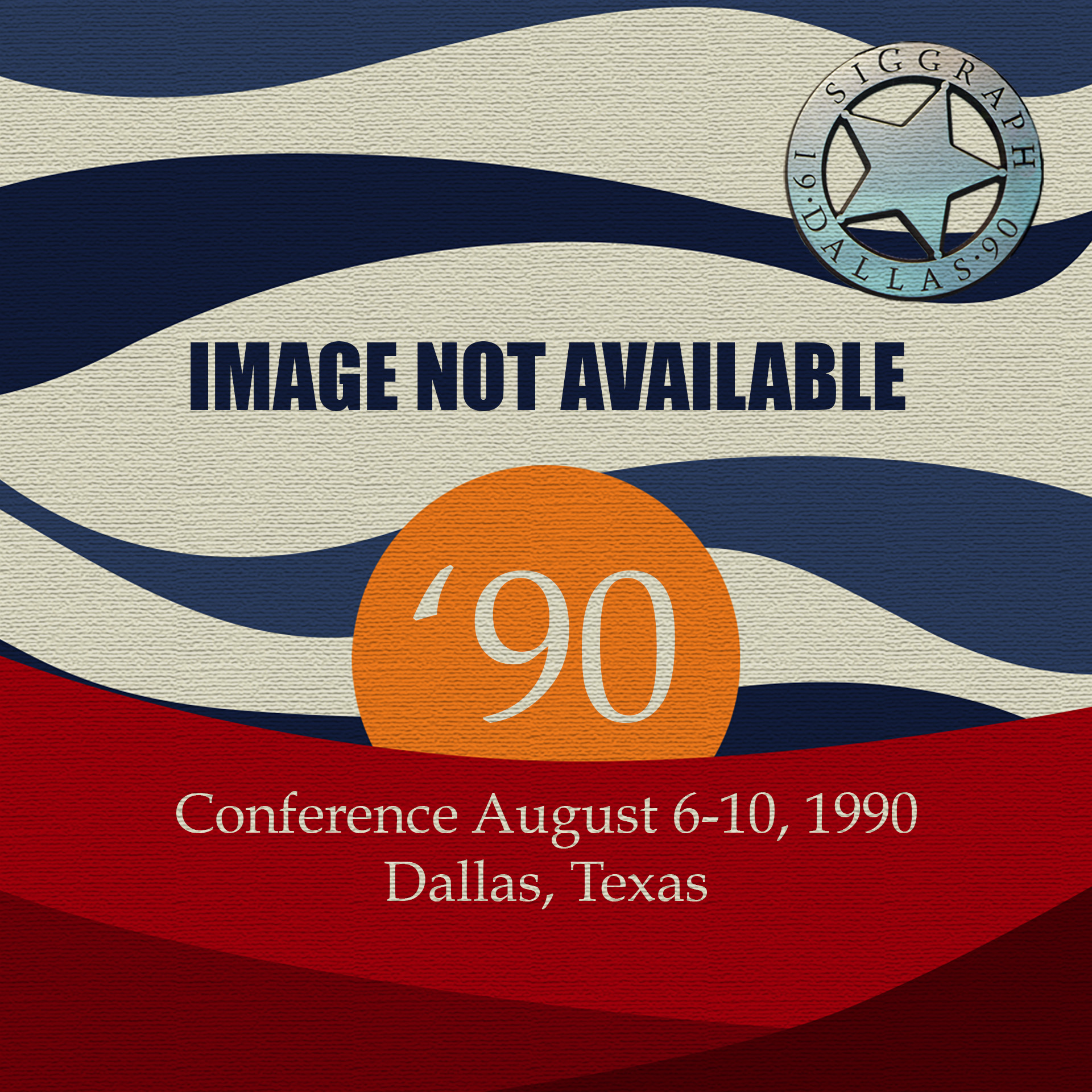“Particle transport and image synthesis” by Arvo and Kirk
Conference:
Type(s):
Title:
- Particle transport and image synthesis
Session/Category Title: Rendering
Presenter(s)/Author(s):
Moderator(s):
Abstract:
The rendering equation is similar to the linear Boltzmann equation which has been widely studied in physics and nuclear engineering. Consequently, many of the powerful techniques which have been developed in these fields can be applied to problems in image synthesis. In this paper we adapt several statistical techniques commonly used in neutron transport to stochastic ray tracing and, more generally, to Monte Carlo solution of the rendering equation. First, we describe a technique known as Russian roulette which can be used to terminate the recursive tracing of rays without introducing statistical bias. We also examine the practice of creating ray trees in classical ray tracing in the light of a well-known technique in particle transport known as splitting. We show that neither ray trees nor paths as described in [10] constitute an optimal sampling plan in themselves and that a hybrid may be more efficient.
References:
1. Albert, G. E., “A general theory of stochastic estimates of the Neumann series for solution of certain Fredholm integral equations and related series,” in Symposium on Monte Carlo Methods, edited by M. A. Meyer, J. Wiley, New York 1956, pp. 37-46.
2. Cercignani, Carlo, “The Boltzmann Equation and its Applications,” Springer-Verlag, New York, 1988.
3. Clark, Francis H., “Methods and data for reactor shield calculations,” in Advances in Nuclear Science and Technology, No. 5, 1971, pp. 95-183.
4. Cook, Robert L., Thomas Porter, and Loren Carpenter, “Distributed Ray Tracing,” Computer Graphics, 18(3), July 1984, pp. 137-145.
5. Duderstadt, J. J., and W. R. Martin, “Transport Theory,” J. Wiley, New York, 1979.
6. Ferry, D. K., “Semi-Classical Boltzman Transport Theory in Semiconductors,” in Physics of Nonlinear Transport in Semiconductors, New York, 1979.
7. Goral, Cindy M., Kenneth E. Torrance, Donald P. Greenberg, and Bennett Battaile, “Modeling the interaction of light between diffuse surfaces,” Computer Graphics, 18(3), July 1984, pp. 213-222.
8. Hall, R. A., and D. P. Greenberg, “A testbed for realistic image synthesis,” IEEE Computer Graphics and Applications, 3(10), November, 1983, pp. 10-20.
9. Hammersley, J. M., and D. C. Handscomb, “Monte Carlo Methods,” Chapman and Hall, 1964.
10. Kajiya, J. T., “The Rendering Equation,” Computer Graphics, 20(4), August 1986, pp. 143-150.
11. Kalos, M. H., and Paula A. Whitlock, “Monte Carlo Methods, Volume I: Basics,” J. Wiley, New York, 1986.
12. Lewis, E. E., and W. F. Miller, Jr., “Computational Methods of Neutron Transport,” J. Wiley, New York, 1984.
13. Siegel, Robert, and John R. Howell, “Thermal Radiation Heat Transfer,” Hemisphere Publishing Corp., Washington DC, 1981.
14. Snyder, John M. and Alan H. Barr, “Ray Tracing Complex Models Containing Surface Tessellations,” Computer Gaphics, Vol. 21, No. 4, July 1987, pp. 119-126.
15. Spanier, Jerome, and Ely M. Gelbard, “Monte Carlo Principles and Neutron Transport Problems,” Addison- Wesley Publishing Company, 1969.
16. Wallace, John R., Michael F. Cohen, and Donald P. Greenberg, “A two-pass solution to the rendering equation: a synthesis of ray-tracing and radiosity methods,” Computer Graphics, 21(4), July 1987, pp. 311-320.
17. Ward, Gregory J., Francis M. Rubinstein, and Robert D. Clear, “A Ray Tracing Solution for Diffuse Interreflection,” Computer Graphics, 22(4), August 1988, pp. 85-92.
18. Whitted, Turner, “An Improved Illumination Model for Shaded Display,” Communications of the ACM, 32(6), June 1980, pp. 343-349.
19. Williams, M. M. R., “Mathematical Methods in Particle Transport Theory,” J. Wiley, New York, 1971.





